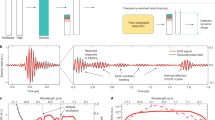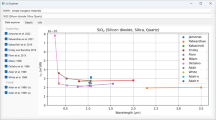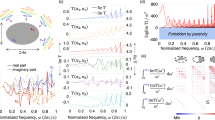Abstract
IN spite of the great theoretical advantages of recording spectra in terms of frequency or wave number, most data on visible and ultra-violet spectra, more particularly spectra of solutions, are in practice expressed as wave-lengths with the millimicron as a favourite unit. One reason for this preference, apart from habit, is found in the inconvenience of sec.−1 and cm.−1 as units. Frequencies expressed in sec.−1 involve large powers of ten (∼ 1015), while the fresnel1 (= 1012 sec.−1) has never become popular. Wave numbers in cm.−1 are of the order of 104, and require the use of written or spoken powers of ten if the recorded values are to express the relatively low precision of measurement in spectra of solution. Thus, to say that the absorption maximum of bromine is at 405 mµ. implies a reasonable uncertainty of about 10 A. in locating it. To express the value as 24,691 cm.−1 or even as 24,700 cm.−1 implies a much greater precision than is obtainable experimentally.
This is a preview of subscription content, access via your institution
Access options
Subscribe to this journal
Receive 51 print issues and online access
$199.00 per year
only $3.90 per issue
Buy this article
- Purchase on Springer Link
- Instant access to full article PDF
Prices may be subject to local taxes which are calculated during checkout
Similar content being viewed by others
References
Brode, W. R., in “Physical Methods in Chemical Analysis”, 1 (edit. by W. G. Berl, Academic Press, New York, 1950).
Author information
Authors and Affiliations
Rights and permissions
About this article
Cite this article
BAYLISS, N. The Permicron: a Unit of Wave Number. Nature 167, 367–368 (1951). https://doi.org/10.1038/167367b0
Issue Date:
DOI: https://doi.org/10.1038/167367b0
This article is cited by
-
A Unit of Wave-number
Nature (1952)
-
A Unit of Wave-Number
Nature (1951)
Comments
By submitting a comment you agree to abide by our Terms and Community Guidelines. If you find something abusive or that does not comply with our terms or guidelines please flag it as inappropriate.



